
There are many signs of spring: The days grow longer; daffodils and tulips burst through the soil; cherry trees blossom; baseball season open;, gardeners prepare soil and plant seeds, and in households throughout the land, the annual ritual of Spring Cleaning begins.
Spring Cleaning began long before Marie Kondo explained how we should tidy-up our lives and discard things that don’t bring us joy. And, unlike other seasonal rituals, the prospect of Spring Cleaning infuses practitioners with conflicting sensations that range from dread of the tasks ahead to expectation of cleansing and renewal.
In days of yore, spring cleaning was about preparing for the new season. For example:
— In the Jewish tradition, the spring festival of Passover requires that every possible crumb of leavened bread be removed from the house — and the only way to do that is a deep cleansing of the entire house.
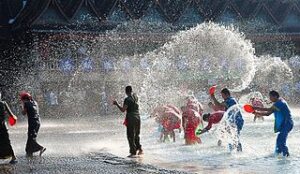
— The Persian tradition of khanate tekani, or “shaking the house,” swept all dust and clutter out of the house to prevent ill-fortune in the year ahead.
— The yogic concept of saucha — purity of thought, word, and deed — requires an environment that is clean and without distractions.
— During Thailand’s Songkran Festival people pour water over each other to wash away bad thoughts, and deep clean houses and temples to purify them.
These activities carry with them a sense of renewal and expectation. The annual cleansing ritual requiring buckets and mops in a war against dirt, not so much.
Mrs. Isabella Beeton’s Advice

“Spring,” according to Mrs. Beeton, “is the usual period for house-cleaning and removing the dust and dirt which notwithstanding all precautions, will accumulate during the winter months.“
In Victorian England, people burned coal in the winter, and used oil or gas lamps. Thus, by the time spring came around, everything in the house was covered with grime. In more recent times, my parents’ house used an oil furnace. About once a year, furniture was pulled away from the walls to reveal black cobwebs generated from the blasts of oil-powered heat. Thus proving dirt and grime will always be with us.
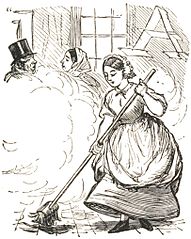
Historically, springtime was the best time to start the cleaning process, because it was warm enough to open the windows and doors, but early enough insects were not an issue. It was a good time to wash soot from the walls, carry rugs outside to beat the dust and dirt out of them, wash the windows. . . The list was endless. Judging by Mrs. Beeton’s portrait above, I doubt she personally beat her rugs, but you never know.
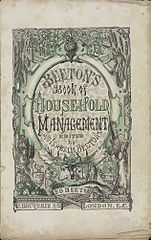
The next question is how best to organize household cleanliness. Mrs Beeton noted in 1861 that “There are options of every house that can only be cleaned occasionally . . . . On these occasions, it is usual to begin at the top of the house and clean downwards.”
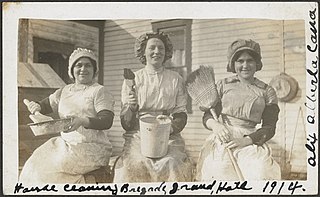
Before beginning the cleaning process, a woman or women [It was almost always women who cleaned.] put on a long, starched apron, and a mobcap to protect her hair. Then, she acquired the necessary equipment, including a carpet broom, dustpan, damp tea leaves, banister brush, house‐sweeping brush, quantities of large, coarse cloths and clean dusters, a house flannel, bath brick, soap, washing soda, sponge, scrubbing brushes, cinder pail, pails of hot and cold water, a ladder and a housemaid’s box supplied with brushes, black lead, emery papers and leathers. She also needed a rattan rug beater, camphor, bran and tar paper.
Then off she went to wash the walls, sweep out the carpets with tea leaves, wallop the rugs, and dust and wash the furniture. In fact, pretty much wash and/or polish anything that didn’t move.
“When to do House Cleaning Jobs”
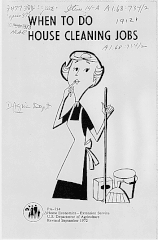
In 1972 the Home Economics Extension Service of the U.S. Dept. of Agriculture published “When to do House Cleaning Jobs.” Once again a woman puts on an apron, gathers her cleaning equipment, and refers to a checklist for those jobs done every day, every week, and “now & then.” For example, the pamphlet suggests washing the refrigerator every week, and mopping the floor daily. Um, did anyone actually do that?The lists for “now & then” in the various rooms aren’t that different from Mrs. Beeton’s advice.
Included in the living room list for “now & then” are the tasks of cleaning the walls, woodwork, and ceiling; cleaning furniture, light fixtures, and pictures; and washing windows and curtains. Plastic furniture should be damp-wiped weekly. And so it goes.
Cleaning Enemy No. 1: DUST
Dust contributes to allergies, irritated eyes, asthma attacks, and contact dermatitis.
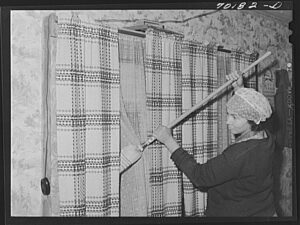
Yet we resist cleaning, because the house will soon be dusty again. It’s the task that is never complete. And there’s a reason for that. Indoor dust comes from many particles including dirt that gets tracked inside on the bottom of our shoes, which is why it’s better to leave shoes outside. Dust also enters on clothing, though we usually keep our clothes on. Carpets, drapes, cushions — anything with fabric — can trap dust which is why fabric items need to be washed.
In short, regular tidying-decluttering-wiping down countertops is beneficial for physical health, as is a seasonal deep clean. But like all activities that are good for us, we resist taking action as long as possible.
Allow me to share an unexpected personal benefit gaining from cleaning out a cupboard:
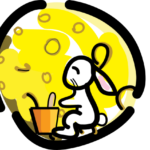
If I had not been sitting cross-legged on the floor to reach the back of the cupboard under the kitchen sink, I would never have seen the spot on the back of my leg that turned out to be skin cancer [now safely treated]. You just never know the hidden benefits of any activity.
Though cleaning will never be my go-to fun activity, it is good for my writing life, because it gives my mind empty space to consider various plot points. In addition, I find dust bunnies more obedient to my will than my characters.
How, when, or even if to deep clean, declutter, or tidy up is an individual choice. But considering the many hacks to make the process easier, there’s no reason not to make a start on the process.
Cleaning is also a source of humor, as this clip for Foil Arms & Hog demonstrates
🧹 🧹 🧹
Illustrations
Daffodils. Photo by Author.
Songkran Festival in China by http://cc.nphoto.net/view/2008/10632.shtml
Mrs. Isabella Beeton, 1857.
Mrs. Caudle’s Return, 1845.
Beeton’s Book of Household Management, 1861.
House Cleaning Brigade, 1914.
When to do Cleaning Jobs, 1972.
Woman Cleaning Farmhouse, 1941.
Rabbit on the Moon. Public Domain.
“Where Does Dust Come From?” Oransi.
Whitney Akers. “5 Ways Spring Cleaning Can Make You Healthier.” Healthline. Mar. 20, 2020.
Ada Louis Duxtable. “Spring Cleaning: A Bustling Tradition.” New York Times. May 4, 1978.

Sandra Wagner-Wright holds the doctoral degree in history and taught women’s and global history at the University of Hawai`i. Sandra travels for her research, most recently to Salem, Massachusetts, the setting of her new Salem Stories series. She also enjoys traveling for new experiences. Recent trips include Antarctica and a river cruise on the Rhine from Amsterdam to Basel.
Sandra particularly likes writing about strong women who make a difference. She lives in Hilo, Hawai`i with her family and writes a blog relating to history, travel, and the idiosyncrasies of life.


